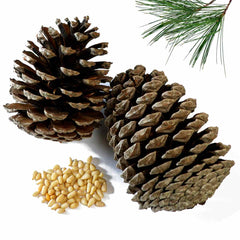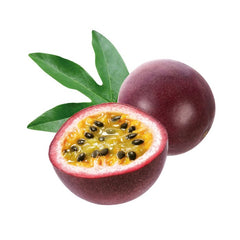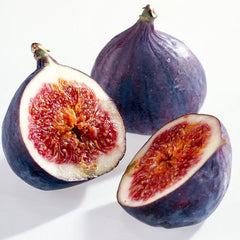What Does Cedarwood Smell Like
As An Amazon Associate We Earn From Qualifying Purchases At No Extra Cost To You

Embark on a woody journey to the heart of nature and discover the timeless aroma of cedarwood. Derived from the fragrant wood of cedar trees, this scent embodies the strength and elegance of the great outdoors. Join us as we explore the question: What does cedarwood smell like?
What Does Cedarwood Smell Like?
The fragrance of cedarwood is a harmonious blend of earthy warmth, subtle sweetness, and woody richness. Imagine the scent of freshly cut cedar logs, resonating with the essence of a dense forest. Cedarwood's aroma is a celebration of nature, offering a grounding and comforting olfactory experience.
Cedarwood's Earthy Warmth
Step into the world of cedarwood, where the fragrance greets you with an earthy warmth that is both comforting and inviting. Picture the rich, soil-like undertones that emanate from the heartwood of cedar trees. Cedarwood's scent is like a gentle embrace from the earth, creating a cozy and grounding atmosphere.
Woody Richness: A Forest Symphony
As you encounter cedarwood, the predominant olfactory impression is a symphony of woody richness. The fragrance captures the essence of the forest, with notes reminiscent of aged cedar logs and the natural oils present in the heartwood. Cedarwood's aroma is a testament to the depth and complexity of the majestic cedar tree, creating a sensory experience that echoes the grandeur of wooded landscapes.
Subtle Sweetness: Nature's Elegance
While primarily woody, there's a subtle undercurrent of sweetness in cedarwood's scent. This delicate sweetness adds a touch of elegance to the fragrance, creating a well-balanced composition that is both robust and gracefully nuanced. Cedarwood's aroma is a delightful interplay of earthiness and sweetness, reminiscent of the natural elegance found within the heart of a cedar forest.
Resinous Comfort: A Forest Haven
Delve deeper into the scent, and you may notice a resinous comfort that characterizes cedarwood's fragrance. It's as if the aroma carries the essence of the resinous sap within cedar trees, creating a warm and enveloping olfactory experience. Cedarwood's fragrance is a journey into a forest haven, where the scent of sturdy trees intertwines with the soothing embrace of nature.
Cedarwood's Natural Symphony
Hence, cedarwood's fragrance is a natural symphony of earthy warmth, woody richness, subtle sweetness, and resinous comfort. It stands as a testament to the enduring and majestic qualities of cedar trees, offering a sensory experience that is both grounding and uplifting. Cedarwood, with its comforting and complex aroma, invites us to immerse ourselves in the serene embrace of the great outdoors, a fragrant journey that unfolds with every deep inhale.
Factors Influencing the Scent of Cedarwood Fragrance Oil
Cedarwood fragrance oil is a carefully crafted composition designed to capture the aromatic profile of cedarwood. The formulation of this fragrance involves a thoughtful combination of aromatic compounds. Here are several factors that contribute to the rich and woody scent of Cedarwood fragrance oil:
Fragrance Composition: Cedarwood fragrance oil is a meticulously blended mixture of various aromatic compounds chosen to replicate the characteristic scent of cedarwood. This composition may include both synthetic and natural ingredients to achieve the desired olfactory profile.
Cedarwood Species: Different species of cedarwood, such as Atlas cedar, Virginia cedar, or Himalayan cedar, can have distinct olfactory profiles. The choice of cedarwood species influences the final fragrance, with each variety contributing unique notes to the blend.
Synthetic vs. Natural Components: Cedarwood fragrance oil often combines both synthetic and natural ingredients. Perfumers make choices to strike a balance between authenticity, cost considerations, and sustainability in the selection of these components.
Extraction Method: The method used to create Cedarwood fragrance oil, whether through distillation or extraction, plays a crucial role in defining the aromatic profile. Specific extraction methods contribute to the faithful recreation of the rich and woody scent.
Additional Woody and Earthy Notes in the Blend: The fragrance may incorporate additional woody or earthy elements to enhance complexity. These complementary notes contribute to the overall richness of the scent, capturing the essence of cedarwood.
Quality of Ingredients: The quality of raw materials, including the source of essential components, directly influences the richness and authenticity of the cedarwood scent in the fragrance oil.
Perfumer's Artistry: The expertise and creativity of the perfumer or fragrance creator are crucial. Perfumers leverage their skills to balance different components, creating a distinctive and delightful cedarwood fragrance.
Regulatory Compliance: Adherence to regulatory standards and restrictions on certain fragrance ingredients is crucial. Compliance with safety guidelines requires careful consideration of ingredient choices to ensure the fragrance is safe for use.
Usage in Products: Cedarwood fragrance oil can be incorporated into various products, including perfumes, candles, room sprays, and skincare items. The interaction with other ingredients in specific product formulations can influence how the cedarwood scent is perceived.
Product Type and Concentration: The concentration of Cedarwood fragrance oil in a product affects the strength and longevity of the scent. Higher concentrations may be suitable for perfumes, while lower concentrations work well for candles, soaps, or room sprays.
Storage Conditions: Proper storage conditions for Cedarwood fragrance oil, both before and after formulation, are essential to maintain its stability and scent. Storing it in a cool, dark environment helps preserve the freshness of the fragrance.
Consumer Preferences and Trends: Formulations of Cedarwood fragrance may adapt to changing consumer preferences and market trends. The popularity of woody scents or unique blends may influence product formulations.
Artisanal vs. Commercial Production: Differences between artisanal and commercial production of Cedarwood fragrance oil may impact ingredient sourcing, formulation, and overall quality. Artisanal methods may emphasize craftsmanship and unique blends.
Post-Formulation Processing: Additional processes, such as aging or filtering after the formulation of the fragrance oil, may influence the final scent and contribute to the desired characteristics.
Exploring different formulations of Cedarwood fragrance oil allows consumers to experience a range of rich and woody scents reminiscent of the majestic cedar tree. Individual preferences play a significant role in selecting the perfect Cedarwood fragrance for various applications.
What to Look for When Choosing Cedarwood Fragrance Oil
Selecting a cedarwood fragrance oil allows you to bring the essence of the great outdoors into your living space. Whether used in candles, diffusers, or personal care products, consider these factors to ensure you choose a high-quality and authentic cedarwood fragrance oil:
Woody Authenticity: Seek a cedarwood fragrance oil that authentically captures the robust, woody, and earthy scent of real cedarwood. Look for a fragrance that embodies the unique notes characteristic of quality cedar.
Natural vs. Synthetic: Determine whether the fragrance oil is derived from natural sources or is synthetically produced. Natural cedarwood oils can provide a more nuanced and realistic scent, closely resembling the aroma of actual cedarwood.
Blend Ingredients: Check the blend of ingredients in the fragrance oil. A well-crafted combination of natural and synthetic components can contribute to a balanced and long-lasting cedarwood fragrance.
Intensity Level: Consider the intensity level of the cedarwood fragrance. Some may prefer a subtle and calming scent, while others may desire a more pronounced and grounding aroma. Look for a fragrance that aligns with your desired level of intensity.
Versatility: Choose a fragrance oil that is versatile and suitable for various applications. Whether used in candles, soaps, lotions, or diffusers, versatility allows you to enjoy the woody scent in different settings.
Packaging: Assess the packaging of the fragrance oil. Opt for a bottle that is dark or opaque to protect the oil from light exposure, preserving its freshness and preventing deterioration over time.
No Residue or Discoloration: Ensure that the cedarwood fragrance oil leaves no residue or discoloration when incorporated into different products. A high-quality oil should seamlessly integrate into various mediums without causing unwanted effects.
Manufacturer Reputation: Research the reputation of the manufacturer or brand. Choose well-established brands with positive reviews, as they are more likely to produce reliable and high-quality fragrance oils.
Testing Options: Look for fragrance oils that offer testing options or sample sizes. This allows you to experience the scent firsthand before committing to a larger quantity, ensuring it aligns with your preferences.
Ethical and Sustainable Practices: Consider the manufacturer's commitment to ethical and sustainable practices. Brands that prioritize responsible sourcing and environmentally friendly production contribute to a more conscientious choice.
By considering these factors, you'll be better equipped to choose a cedarwood fragrance oil that not only aligns with your preferences but also ensures a high-quality and grounding olfactory experience in your chosen applications.
Where to Find Reputable Cedarwood Fragrance Oils
Discovering high-quality cedarwood fragrance oils allows you to bring the outdoors inside, creating a warm and inviting atmosphere. Here are some places to find reputable cedarwood fragrance oils:
Specialty Candle and Soap Supply Stores: Explore specialty stores dedicated to candle-making and soap supplies, as they often carry a variety of fragrance oils, including classic scents like cedarwood.
Online Fragrance Oil Retailers: Browse reputable online platforms specializing in fragrance oils. Websites and retailers dedicated to aromatherapy, candle making, or DIY crafting may have an extensive selection of cedarwood fragrance oils. Check product descriptions and customer reviews for authenticity and quality.
Artisanal or Handmade Markets: Attend artisanal markets or craft fairs where independent sellers showcase handmade products. Artisan vendors may create unique and carefully crafted cedarwood fragrance oils, providing an opportunity to explore distinct options.
Local Essential Oil or Perfume Shops: Specialty shops focusing on essential oils or perfumes may carry cedarwood fragrance oils. These stores often prioritize high-quality scents and may offer a range of unique and woody aromas.
Online Marketplaces: Platforms like Etsy or other online marketplaces featuring handmade or artisanal products can be sources for cedarwood fragrance oils. Look for sellers with positive reviews and detailed information about their products.
Aromatherapy Stores: Aromatherapy stores often carry a variety of fragrance oils for different applications. Inquire about the availability of cedarwood scents to add a grounding and comforting aroma to your living space.
Local Farmers' Markets or Herbal Shops: Check with local farmers' markets or herbal shops that specialize in natural products. Some of these establishments may offer fragrance oils with botanical scents, including cedarwood.
Specialty Perfume Retailers: Explore specialty perfume shops that focus on unique and exotic fragrances. These stores may carry cedarwood fragrance oils known for their distinctive and rich woody notes.
Word of Mouth: Seek recommendations from friends, family, or members of fragrance communities for trusted sources of cedarwood fragrance oils. Personal experiences and suggestions can guide you to reputable suppliers known for quality and authenticity.
Check Ingredients and Descriptions: Before making a purchase, carefully read product descriptions and check ingredient lists for cedarwood fragrance oils. Authentic and reputable sellers provide clear information about the composition and intended use of their products.
Note: Cedarwood fragrance oils can bring a comforting and woody note to your DIY projects. Ensure that the fragrance oil you choose aligns with your intended use, whether it's for candles, soaps, diffusers, or other creative endeavors. Follow safety guidelines provided by the manufacturer for proper usage.
20 Questions and Answers about Cedarwood:
-
What is cedarwood in perfumery?
- Cedarwood in perfumery refers to essential oil extracted from the wood of cedar trees. It is a popular base note in many fragrances.
-
Which types of cedar trees are commonly used in perfumery?
- The most common types are Atlas cedarwood (Cedrus atlantica), Virginia cedarwood (Juniperus virginiana), and Himalayan cedarwood (Cedrus deodara).
-
What does cedarwood smell like in perfumes?
- Cedarwood imparts a warm, woody, and slightly sweet aroma to perfumes. It has earthy and balsamic undertones.
-
Is cedarwood typically used as a top, middle, or base note in perfumery?
- Cedarwood is primarily used as a base note in perfumery due to its long-lasting and grounding qualities.
-
What are the main chemical components of cedarwood essential oil?
- The main constituents include cedrol, cedrene, thujopsene, and various sesquiterpenes.
-
How does cedarwood interact with other fragrance notes?
- Cedarwood complements many other notes, enhancing earthy, spicy, and oriental fragrances. It blends well with floral, citrus, and herbaceous notes.
-
Can cedarwood be the main focus in a fragrance, or is it typically used as a supporting element?
- While cedarwood can be the main focus in some fragrances, it is often used as a supporting element to add depth and warmth.
-
Does cedarwood have any therapeutic properties in addition to its use in perfumery?
- Yes, cedarwood is believed to have calming and grounding effects, making it popular in aromatherapy.
-
Are there any variations in scent between different types of cedarwood?
- Yes, the different types of cedarwood have distinct scent profiles. For example, Atlas cedarwood is often sweeter than Virginia cedarwood.
-
Can cedarwood be synthetically reproduced in perfumery?
- Yes, cedarwood notes can be synthesized, but natural cedarwood essential oil is often preferred for its complexity.
-
Is cedarwood more commonly found in men's or women's fragrances?
- Cedarwood is versatile and can be found in both men's and women's fragrances. Its warm and woody nature makes it a popular choice for unisex scents.
-
How does the geographical origin of cedarwood affect its fragrance profile?
- The geographical origin can influence the aroma; for example, Himalayan cedarwood might have different nuances compared to American or Moroccan cedarwood.
-
Is cedarwood often used in niche or mainstream perfumery?
- Cedarwood is utilized in both niche and mainstream perfumery, showcasing its broad appeal.
-
Does cedarwood have fixative properties in perfumery?
- Yes, cedarwood is known for its fixative qualities, helping to anchor and prolong the overall fragrance.
-
Can cedarwood be found in other beauty and personal care products besides perfumes?
- Yes, cedarwood is used in various products such as soaps, lotions, and beard oils due to its pleasing scent and potential skin benefits.
-
Are there any cultural or historical associations with cedarwood in perfumery?
- Cedarwood has a rich history and is often associated with spiritual and sacred uses in various cultures. It has been used in perfumery for centuries.
-
Does cedarwood have any potential allergenic effects?
- While cedarwood is generally well-tolerated, individuals with sensitivities or allergies may want to patch-test before using products containing cedarwood.
-
Can cedarwood be used in combination with other woodsy notes in a fragrance?
- Yes, cedarwood blends well with other woodsy notes like sandalwood and vetiver, creating complex and harmonious fragrances.
-
Is cedarwood sourced sustainably in the perfume industry?
- Sustainable sourcing is a growing concern, and efforts are made to ensure the ethical and responsible harvesting of cedarwood to protect the environment.
-
Can cedarwood be used in natural or organic perfumery?
- Yes, cedarwood is a popular choice in natural and organic perfumery due to its botanical origin and the desire for more natural ingredients in fragrance formulations.
Buy Perfumes - Best Online Retailers
Click For Affordable Inspired Perfume Alternatives
Click For The Best Niche Perfumes & Decants
Pheromone Perfumes - Confidence, Attraction & Appeal - Click For More
Home Fragrances & Candle Warmers - Click To Scent Up Your Spaces Today!



